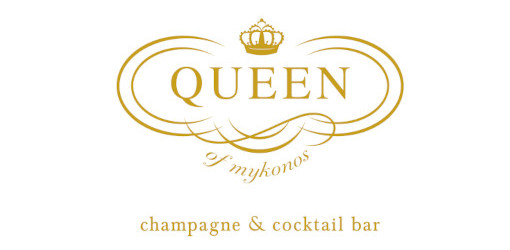Contributors are not employed, compensated or governed by TD, opinions and statements are from the contributor directly
With the world opening back up and a relaxation on testing restrictions, 2022 is set to be a big year for travel. Airlines, tour operators, travel agencies, and hotels are all reporting a huge surge in bookings. Now is the time to capitalise on that summer peak.
Travel set to be at an all-time high in 2022
It’s no surprise that this year is going to be big for travel. Holidaymakers already feel like they have lost two years, and even though the cost of living is skyrocketing, those with a disposable income are still going to book that trip they’ve been waiting for.
While the pandemic had a hugely negative financial impact on many households, for others – especially in the work from home professional category – it actually allowed time and space for saving due to the necessary limitations placed on leisure activity.
Now, people are keen to go out and see the world – and splurge on doing so to make up for lost time.
The curse of cart abandonment in the travel industry
While this seems like it could be a real boost for the travel industry, this sector is one that struggles when it comes to converting leads in the digital sphere.
The travel industry has one of the highest cart abandonment rates of any sector and actually only contributes a fraction of overall internet spending. But why?
How travel can build trust and reduce flight risks
Travel is considered a big purchase. It’s also an experiential purchase, so it’s no surprise that consumers want to research hard, shop around, and source the very best deals.
Studies have shown that pre-pandemic, it would generally take someone 45 days and visiting 38 different sites before they decided to book a holiday. The reasons for cart abandonment vary, from the final price being too high and complicated booking processes to wanting to do more research and feel sure that the holiday company is trustworthy.
But there are ways in which travel companies can tighten trust and potentially reduce the abandoned cart rate, including:
- Being upfront and offering clarity on final pricing – studies show that the final price is when customers are the most likely to abandon cart as they hadn’t taken hidden extras and taxes into account.
- Offer as much information as possible (or access to information) so that customers don’t need to go elsewhere to do their research. Customers leaving the page before purchase adds to the risk of them buying from another provider.
- Keeps forms simple and offer a variety of payment options. Customers may also bounce if form-filling is a laborious process or if their preferred method of payment isn’t available, so consider providing choices like PayPal, Apple pay, Klarna, etc.
- While cart abandonment is high for the travel sector, statistics also show that an incredible 87% of customers would be willing to return to the site and book at a later date. Travel companies can encourage this with targeted ads, email campaigns, and remarketing methods.
It’s personal: how personalisation can set a precedent
While many sectors may have been slow on the digital uptake, the travel sector was relatively quick off the mark and well-placed when it comes to swapping a physical brick and mortar experience for online booking.
Airlines, hotels, and travel agencies all invite online bookings and contactless check-ins, providing a seamless, touch-free experience in a post-COVID world. But consumers still do expect a personalised experience.
There are many ways in which travel agencies can leverage personalisation to deliver a more targeted experience to customers. Just a few examples include:
- Geotargeting by using geographical data to ensure you are promoting the right destinations
- Using countdown timers and weather maps to promote a ‘carpe diem’ mentality
- Encouraging logins so you can tailor website content to meet individual interests and needs
- Creating dynamic offers that appeal directly to your customers’ desires
All of these are ways in which travel agencies can personalise their offering and deepen trust.
Looking closer to home
While far-flung adventures and sun-seeking are set to be 2022 trends, this doesn’t mean that more localised travel destinations can’t benefit from a similar approach. It’s worth remembering that staycations were all the rage last year, and there’s sure to be another boost in local bookings this year, too, for those who aren’t looking to make the leap into abroad travel just yet.
Travel agencies with offerings in the UK should also be looking for ways to make the digital experience sleeker, more personalised, and exciting for their customers.
For example, the charity Morecambe Bay Partnership honed in on that post-COVID desire to get outdoors while promoting a local tourist destination in an inclusive way to residents who may want to ‘tour’ on their doorstep.
Offering tramper trails for those with reduced mobility, putting an emphasis on community and sustainability, and crafting a website that showcases these values along with the rich heritage of the coastal area has helped to transform and communicate a new vision of Morecambe Bay for tourists and locals alike.
Likewise, Windermere Lake Cruises had to adjust its website to cope with the surge in bookings from travellers focused more on the home turf. The change in consumer behaviour meant that this much-loved tourist attraction needed to improve their website performance, improving both speed and the overall booking experience. They wanted to ensure customers had the same seamless experience regardless of whether they booked in advance or purchased tickets for the same day. And let’s not forget, as with all tourist attractions, Windermere Lake Cruises had to ensure it adhered to evolving COVID legislation.
Windermere Lake Cruises achieved this by improving the mobile booking experience on their website and using technology to minimise unnecessary people movements on their vessels. By offering an enhanced customer experience from web to water, it helped to streamline the process for a fuss-free summer and set the right expectation for the world class visitor experience tourists were, and are, anticipating
For travel agencies who want to secure customers at the last mile, there are things you can do. Key takeaways include:
- Knowing why your customers abandon their carts
- Filling in the gaps of information and pricing structure
- Keeping forms and payment options simple
- Using data and marketing to personalise connection and communication
- Making sure you take advantage of the staycation and targeting local residents
- Streamlining booking processes


